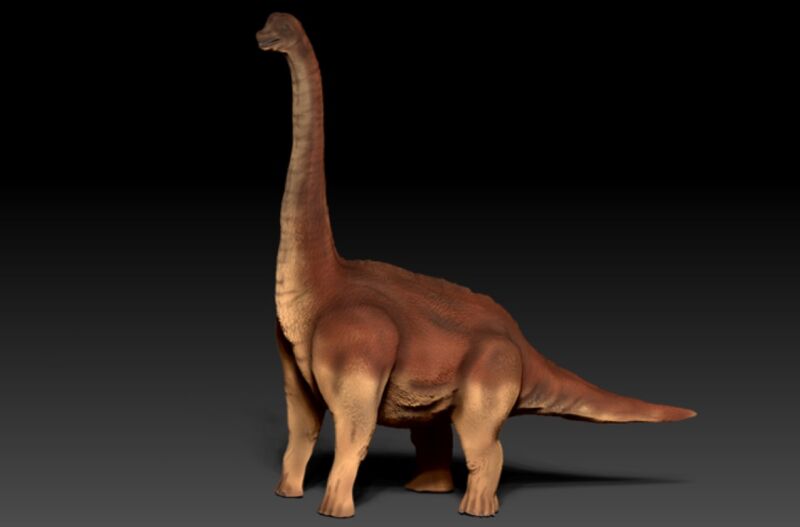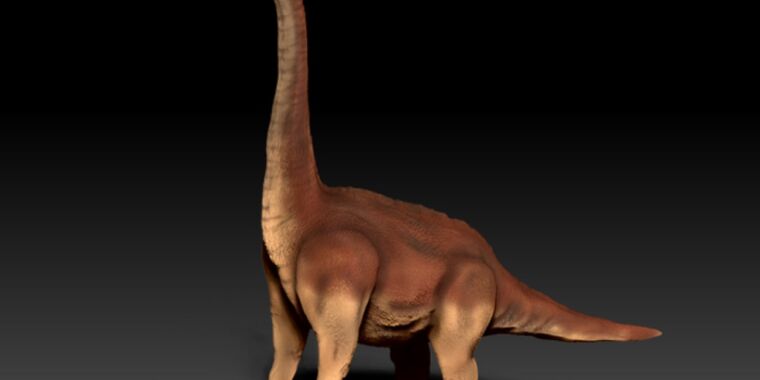
Andreas Jannel
Ask people to think of a dinosaur, and they’ll likely name Tyrannosaurus Rex, the carnivorous antagonist prominently featured in the Jurassic Park and Jurassic World film franchises. But an equally well-known dinosaur clade are the herbivorous sauropods, which include Brachiosaurus, Diplodocus, Apatosaurus, Argentinosaurus, and Brontosaurus. Australian paleontologists have digitally reconstructed these plant-munching giants to glean insight into how their feet managed to support their enormous weight, according to a new paper published in the journal Science Advances.
“We’ve finally confirmed a long-suspected idea and we provide, for the first time, biomechanical evidence that a soft tissue pad—particularly in their back feet—would have played a crucial role in reducing locomotor pressures and bone stresses,” said co-author Andreas Jannel, who worked on the project while completing doctoral studies at the University of Queensland. “It is mind-blowing to imagine that these giant creatures could have been able to support their own weight on land.”
Sauropods (clade name: Sauropoda, or “lizard feet”) had long-necked, long-tailed bodies that made them the lengthiest animals to have roamed the Earth. They had thick and powerful hind legs, club-like feet with five toes, and more slender forearms. It’s rare to find complete Sauropod fossils, and even those that are mostly complete still lack the heads, tail tips, and limbs. Scientists have nonetheless managed to learn a great deal about them, and digital reconstruction is proving to be a valuable new tool in advancing our knowledge even further.
For instance, in 2013, researchers digitally reconstructed Argentinosaurus to test its locomotion capabilities. Prior assessments of the sauropod’s likely speed had been largely based on studying bone histology and evidence from trace fossils (especially footprints). The digital skeleton took into account the location (and layering) of muscles and joints when calculating the animal’s gait and speed. The team concluded that Argentinosaurus would have had a top speed of only about 5 mph (2 m/s) because of its size and weight.
Sauropods were assumed to walk like elephants, but a new way to analyze footprints shows their gait was most similar to a hippopotamus.
Many paleontologists had assumed that sauropods walked with a gait similar to elephants. But a study published earlier this year by British scientists challenged that assumption, arguing that the sauropod frame was too wide to maintain balance with such a gait. They based their conclusion on a new method of footprint analysis that looks at variations in tracks from one stride to the next to determine the timing of each footfall. They compared the sauropod tracks with those of various modern animals.
The sauropod’s gait didn’t match any of them, although the gait of the hippopotamus—another heavy animal with widely set legs—came the closest. As for the elephant, its gait was actually the opposite of a sauropod. Elephants move laterally, but if sauropods walked that way, there would be too much swaying from side to side for stable locomotion. Instead, the sauropods likely walked with a diagonal gait, with the front foot touching the ground just before the opposite hind foot. That way, the dinosaurs always had at least one foot on the ground on each side for stability.








